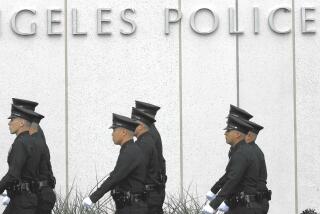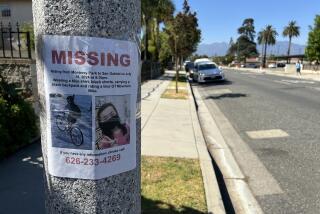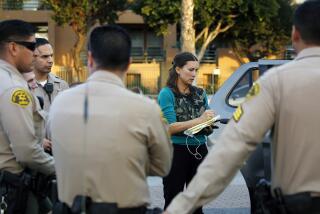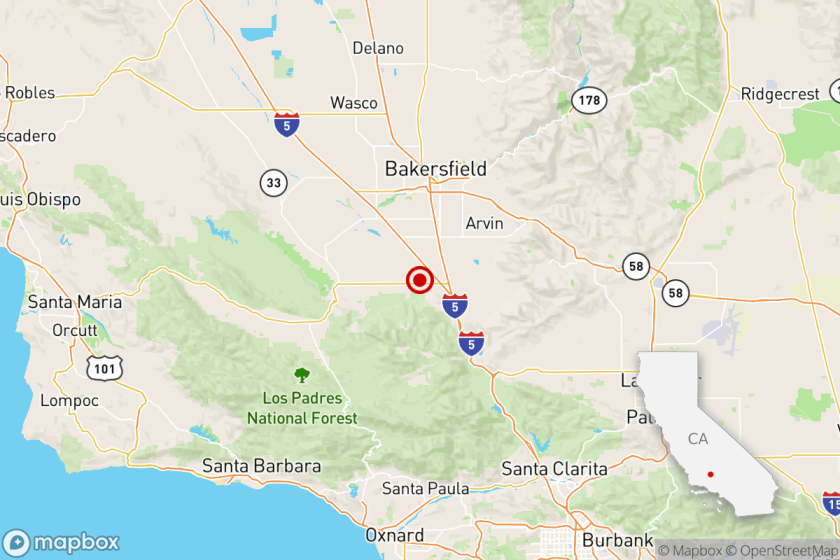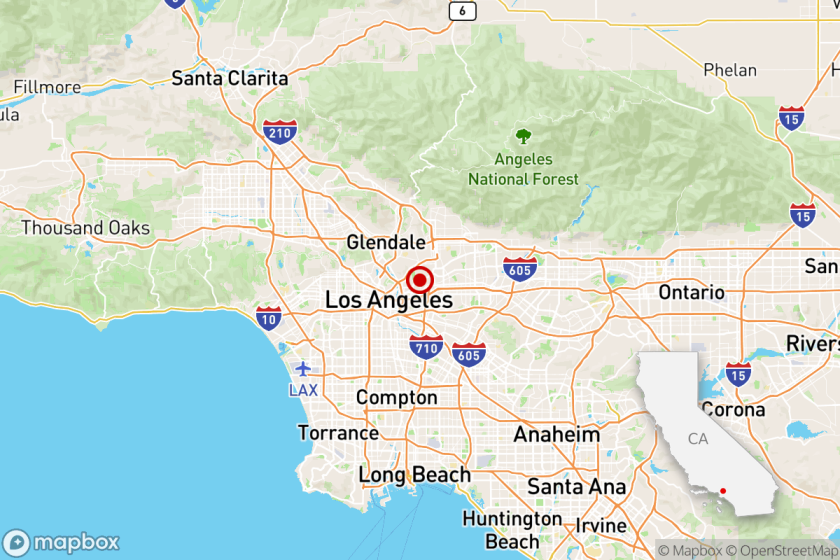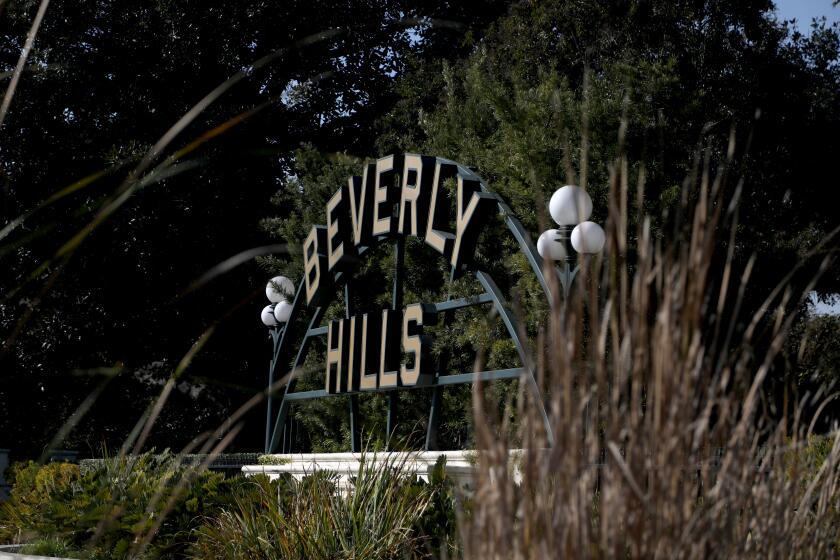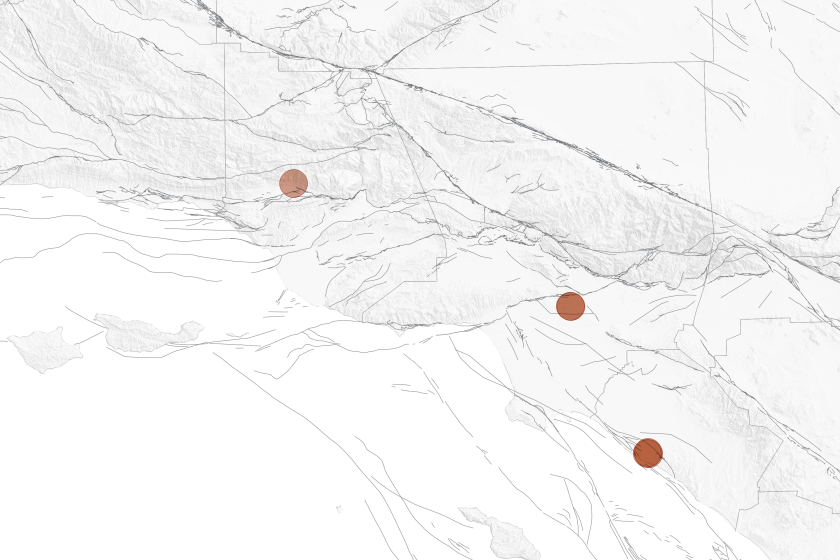Damage Limited Despite Temblor’s Magnitude
It was the largest earthquake to hit California in four years and the first since the 1994 Northridge temblor to result in a loss of life.
But earthquake experts said Monday that the 6.5 temblor that struck the Central Coast could have been much more destructive had it occurred in an urban area rather than a rural one.
The epicenter was six miles northeast of San Simeon. That area is mainly ranchland, and the greatest damage occurred a full 20 miles away in Paso Robles, the nearest town in the path of quake rupture.
Seismologists have not determined what fault the quake erupted on. But they concluded it was a thrust fault, where one side of the fault is sliding over the other.
They suspect the fault was no more than 20 miles in length, a factor that limited the size of the quake.
The rupture at 11:15 a.m. proceeded from northwest to southeast, pushing from the Pacific Ocean toward the Santa Lucia Mountains and Paso Robles. It occurred at a depth of about four miles, which is considered fairly close to the surface.
Lucy Jones, the scientist in charge of the Pasadena office of the U.S. Geological Survey, said the Central Coast has fewer earthquakes on average than other California seismic hot spots, such as the Eureka and Imperial valleys.
Because all the known faults in the area are relatively small, experts doubt that the Central Coast could experience the kind of catastrophic quake that has occurred on the San Andreas Fault.
“But it is certainly a highly possible location” for a smaller quake, Jones said, pointing out that there had been a magnitude 6.0 quake in the same vicinity in 1952.
Tom Heaton, a Caltech earthquake engineering professor who is a leading authority on how structures will respond to a quake, said that if Monday’s temblor had occurred in Los Angeles or the Bay Area, “it would very likely have been a very damaging event.
“Many of the older brick, or [inflexible] concrete buildings would have received serious damage,” he said. “There would have been collapses or pancaking of floors.”
Heaton said it was no surprise that the loss of life and serious damage Monday occurred in an area of old masonry construction. A commercial building that collapsed, killing at least two people, had not been retrofitted, city officials said.
“One of these days, we’re going to take retrofitting of these older buildings more seriously than we do now,” Heaton said.
Heaton also paid tribute to the late newspaper magnate, William Randolph Hearst, whose castle above San Simeon was only three miles from the epicenter.
Hearst used massive reinforced concrete in building the sprawling estate, a manner of construction that has proved able to withstand large earthquakes. Little structural damage was reported there Monday.
Like the Monday quake, the 1994 Northridge was on a thrust fault. But the 6.7 Northridge temblor was about twice as powerful as the quake Monday.
Seismologists have learned that even more than magnitude, the intensity of the shaking is often the better indicator of a quake’s strength.
The highest intensity of shaking Monday was an 8 on the Modified Mercalli scale, which is one method scientists use to measure intensity.
A quake this intense could cause masonry buildings to collapse and wood-frame houses, if not bolted down, to slide off their foundations.
Under this measure, the San Simeon quake was considerably less intense than the Northridge quake. Because the Northridge rupture occurred in a densely populated region, the destruction and death toll were far greater.
The Hector Mine quake of October 1999 was a magnitude 7.1, but it hit in such a sparsely populated desert area that it caused little damage and no injuries. The Hector Mine quake was about six times stronger than the San Simeon quake.
Jones said that nine aftershocks of magnitude 4.0 or higher occurred in the first three hours after the main San Simeon shock. The chances are “greater than 90% that a magnitude 5.0 or bigger aftershock would occur in the next week,” she said.
The chances that the quake was actually a foreshock of a larger quake are very slim, she said.
A team of geologists is on the way to the site to inspect for any signs of surface rupture. The geologists hope to eventually identify the fault.
The San Simeon and Nacimiento faults are nearby, but they are horizontal strike-slip, not thrust faults.
Finding the fault might not be easy. Scientists recalled Monday that nearly 10 years after Northridge, there is no complete agreement as to which fault was involved in that temblor.
Few seismic instruments were operating in the immediate vicinity of Monday’s quake, but instruments at the Diablo Canyon nuclear power plant near San Luis Obispo, nearly 30 miles away, showed that shaking intensities there were only 15% to 20% of gravity, not enough to threaten the plant.
More to Read
Sign up for Essential California
The most important California stories and recommendations in your inbox every morning.
You may occasionally receive promotional content from the Los Angeles Times.
